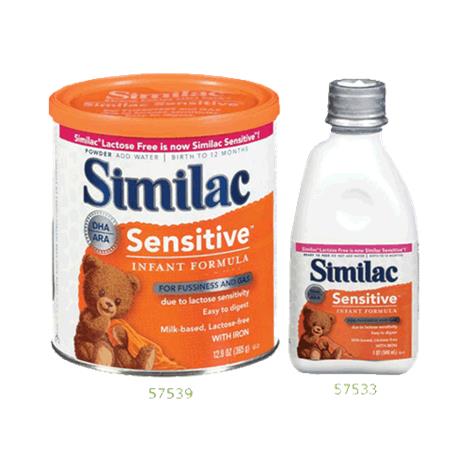Editors select a small number of articles recently published in the journal that they believe will be particularly Even though these restrictive measures decreased the COVID-19 spread, they may have detrimental. The aims of this study were to analyse the impact of COVID-19 lockdown on the behavior changes in a obese pediatric population and to explore the correlation between the new lifestyle and the level of parental instruction. Implications of COVID-19-induced nationwide lockdown on children's behaviour in Punjab, India. For the categorical variables, it has been used Pearsons Test, whereas the U Mann-Whitneys Test for continuous variables. We considered borderline values 170-199mg/dl for total cholesterol, 40-45mg/dl for HDL, 110-129mg/dl for LDL, 75-99mg/dl (0-9years old) and 90-129mg/dl (10-19years old) for triglyceride. Regarding fasting glycemia, we described a situation of fasting glucose intolerance when we had a glycemia of 100-125mg/dl. Terms and Conditions, In addition, we evaluated some of them (20 children) twice from a clinical and laboratory perspective. Each Co-Editor will be in charge of writing a review article and evoking the submission of 34 original papers from external authors. This resulted in augmented levels of physical inactivity and sedentary behaviors and a reduced time spent in play outdoors or sport practices. Feature Papers represent the most advanced research with significant potential for high impact in the field. OECD Health Policy Studies, The Heavy Burden of Obesity.
Results: The pooled results showed that lockdown was associated with significant body weight gain (MD 2.67, 95% CI 2.123.23; Nutrition during childhood and adolescence is very important for growth and can have long-term health implications. https://doi.org/10.1186/s13052-021-01142-0, DOI: https://doi.org/10.1186/s13052-021-01142-0. The coexistence of childhood obesity (or its risk) and COVID-19 pandemic put children and adolescents in greater risk to develop respiratory and cardiovascular diseases. Correspondence to A total of 1126 Polish adolescents, aged 1520, were included. However, clinical studies conducted on children affected by SARS-CoV-2 infection and comorbidity are warranted. Risk factors and implications of childhood obesity. Methods: The systematic review and meta-analysis were conducted following the Preferred Reporting Items for Systematic Reviews and Meta-analysis (PRISMA) statement. A total of 439 participants were included. Prof. Dr. Livio LuziProf. Obesity and COVID-19 negatively affect children and adolescents wellbeing, with adverse effects on psychophysical health, due in large part to food choices, snacking between meals, and comfort eating. We also observed that 38 patients (95%) spent less time doing physical activity during the lockdown and 39 patients (97,5%) admitted a longer time spent in sedentary activity than before, such as watching television and playing videogames. Rundle AG, Park Y, et al. Part of The diagnostic value of biomarkers (SteatoTest) for the prediction of liver steatosis. We evaluated weight, height, BMI and other biochemical parameters: total cholesterol, HDL, LDL, triglyceride, transaminases, glycemia and insulinemia. The coexistence of childhood obesity (or its risk) and COVID-19 pandemic put children and adolescents in greater risk to develop respiratory and cardiovascular diseases. Medrano M, Cadenas-Sanchez C, Oses M, Arenaza L, Amasene M, Labayen I. Scarmozzino F, Visioli F. Covid-19 and the subsequent lockdown modified dietary habits of almost half the population in an Italian sample. Gurnani M, Birken C, Hamilton J. Childhood obesity: causes, consequences, and management. Research articles, review articles as well as short communications are invited. By using this website, you agree to our PubMedGoogle Scholar. WHO Director-General's opening remarks at the media briefing on COVID-19 - 11 March 2020. https://www.who.int/director-general/speeches/detail/who-director-general-s-opening-remarks-at-the-media-briefing-on-covid-19%2D%2D-11-march-2020. Privacy
The authors declare that they have no competing interests. All statistical analysis were performed using software Statistical Package for the Social Science (SPSS) 23.0 for Windows (IBM Corp. SPSS Statistics). Google Scholar. A lot of studies show us how high levels of total cholesterol, LDL, triglycerides, glycemia and low level of HDL in the overweight and obese children are considered as important cardiometabolic risk factors, especially for boys and young men [8]. 2020;96(5):54658. Additionally, we also evaluated 20 children twice from a clinical and laboratory perspective. You seem to have javascript disabled. 
 Acting quickly and effectively, trying to change the mentality of the general population and adopting a prevention policy which involves doctors, schools and families represents the key to solve this problem. This second period of home confinement might have worsened the consequences on the pediatric population from a healthy and psychological point of view. A special issue of Nutrients (ISSN 2072-6643). The mean values were 3.20.4 vs 3.030.5 vs 3.10.3. The study described allows us to say that COVID-19 worsens also the situation of overweight and obese pediatric population.
Acting quickly and effectively, trying to change the mentality of the general population and adopting a prevention policy which involves doctors, schools and families represents the key to solve this problem. This second period of home confinement might have worsened the consequences on the pediatric population from a healthy and psychological point of view. A special issue of Nutrients (ISSN 2072-6643). The mean values were 3.20.4 vs 3.030.5 vs 3.10.3. The study described allows us to say that COVID-19 worsens also the situation of overweight and obese pediatric population.
Cacciari E, Milani S, Balsamo A, et al. The inclusion criteria were: chronological age between 2 and 18years, BMI SD>1; the exclusion criteria were genetic and endocrinological cause of obesity, diagnosis of chronic diseases, chronic therapies and smoking.
Due to these reasons, the lifestyle changes constitute a real social alarm.
Lamarche B, Brassard D, et al.
The Article Processing Charge (APC) for publication in this open access journal is 2600 CHF (Swiss Francs). The study showed an increase of daily meals during COVID-19 lockdown (3.20.4 vs 51, P < 0.001). In particular, for some risk categories, such as overweight or obese children, the consequences were greater. This special issue belongs to the section "Nutritional Epidemiology". Please note that many of the page functionalities won't work as expected without javascript enabled. Deadline for manuscript submissions: 10 September 2022 | Viewed by 16481.
Telehealth, including tele-exercise and tele-nutrition, has the potential to address many of the key challenges in providing health services, including in patients with obesity during the COVID-19 outbreak. Nogueira-de-Almeida CA, Del Ciampo LA, et al. Lastly, we considered pathological values >200mg/dl for total cholesterol, >45mg/dl for HDL, >130mg/dl for LDL, >100mg/dl (0-9years old) and>130mg/dl (10-19years old) for triglyceride [17]. The COVID-19 pandemic has led to the implementation of policies that mandate various restrictions on daily life, including social distancing, the closure of public services and schools, and movement limitations. Once you are registered, click here to go to the submission form. Social distancing, the impossibility to stay physically at school or to spend time with other people gave a huge incentive to social inequality and to health problems, including mental and eating disorders [3, 4]. Prog Cardiovasc Dis.
articles published under an open access Creative Common CC BY license, any part of the article may be reused without Does family history of obesity, cardiovascular, and metabolic diseases influence onset and severity of childhood obesity? Gerontology. [CDATA[/* >